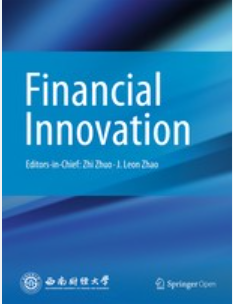加密货币间高阶矩的时变溢出效应
IF 7.2
1区 经济学
Q1 BUSINESS, FINANCE
引用次数: 0
摘要
本研究使用高频(1 分钟)价格数据来研究主要加密货币(即比特币、以太坊、Binance、Cardano、莱特币和瑞波币)之间在波动率和高阶(本文中为三阶和四阶)时刻的关联性,其基础是偏度和峰度。样本时间段为 2020 年 2 月 10 日至 2022 年 8 月 20 日,其中包含了大流行病、战争时期、加密货币市场崩溃以及稳定币的全面崩溃。利用时变参数向量自回归(TVP-VAR)连通性方法,我们发现所有已实现估计器的总动态连通性随着数据的时间频率而增长。此外,所有估计值都与时间有关,并受到重大事件的影响。作为例外,俄乌战争并没有增加加密货币之间的总连通性。对三阶和四阶矩的分析揭示了二阶矩捕捉不到的额外动态,突出了在研究加密货币市场的系统性崩溃和肥尾风险时分析高阶矩的重要性。其他测试表明,基于滚动窗口的 VAR 模型并不能揭示这些模式。在方向性风险传递方面,Binance 在所有三个连通性系统中都是一致的净传递者,并且在波动性连通性网络中占主导地位。相比之下,偏度和峰度连通性网络由莱特币主导,比特币和瑞波币在所有三个网络中都是净冲击接收者。这些发现有望为投资组合优化、风险管理和政策制定实践提供指导。本文章由计算机程序翻译,如有差异,请以英文原文为准。
Time-varying spillovers in high-order moments among cryptocurrencies
This study uses high-frequency (1-min) price data to examine the connectedness among the leading cryptocurrencies (i.e. Bitcoin, Ethereum, Binance, Cardano, Litecoin, and Ripple) at volatility and high-order (third and fourth orders in this paper) moments based on skewness and kurtosis. The sample period is from February 10, 2020, to August 20, 2022, which captures a pandemic, wartime, cryptocurrency market crashes, and the full collapse of a stablecoin. Using a time-varying parameter vector autoregressive (TVP-VAR) connectedness approach, we find that the total dynamic connectedness throughout all realized estimators grows with the time frequency of the data. Moreover, all estimators are time dependent and affected by significant events. As an exception, the Russia–Ukraine War did not increase the total connectedness among cryptocurrencies. Analysis of third- and fourth-order moments reveals additional dynamics not captured by the second moments, highlighting the importance of analyzing higher moments when studying systematic crash and fat-tail risks in the cryptocurrency market. Additional tests show that rolling-window-based VAR models do not reveal these patterns. Regarding the directional risk transmissions, Binance was a consistent net transmitter in all three connectedness systems and it dominated the volatility connectedness network. In contrast, skewness and kurtosis connectedness networks were dominated by Litecoin and Bitcoin and Ripple were net shock receivers in all three networks. These findings are expected to serve as a guide for portfolio optimization, risk management, and policy-making practices.
求助全文
通过发布文献求助,成功后即可免费获取论文全文。
去求助
来源期刊

Financial Innovation
Economics, Econometrics and Finance-Finance
CiteScore
11.40
自引率
11.90%
发文量
95
审稿时长
5 weeks
期刊介绍:
Financial Innovation (FIN), a Springer OA journal sponsored by Southwestern University of Finance and Economics, serves as a global academic platform for sharing research findings in all aspects of financial innovation during the electronic business era. It facilitates interactions among researchers, policymakers, and practitioners, focusing on new financial instruments, technologies, markets, and institutions. Emphasizing emerging financial products enabled by disruptive technologies, FIN publishes high-quality academic and practical papers. The journal is peer-reviewed, indexed in SSCI, Scopus, Google Scholar, CNKI, CQVIP, and more.
 求助内容:
求助内容: 应助结果提醒方式:
应助结果提醒方式:


